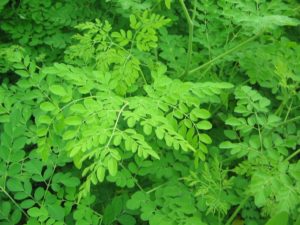Welcome to the Agroforestry Word of the Week blog!
We’re making it easy for you to get into the world of agroforestry by sharing common agroforestry terms and examples with you every Wednesday. Subscribe here to receive your weekly word and start building your agroforestry vocabulary and knowledge.
Naturalized Plant - /ˈnaCH(ə)rəˌlīzd plant/ - noun
March 6th, 2019
Definition: A plant that is not originally native to an area, but has been introduced and planted to such an extent that it no longer needs human help to reproduce or maintain itself overtime.
In the Forest Garden: Farmers must be careful when deciding which naturalized plants grow in their field. While it may be less labor intensive to have plants and trees grow in your field with little to no care necessary, certain naturalized species known as invasive species become harmful and disrupt healthy ecosystems like Forest Gardens.
A common example of this is Imperata cylindrica, also called ‘kunai grass’, native to east and southeast Asia, it is often used to cover the roofs of traditional homes and planted near beaches to stabilize soil and reduce erosion. Once introduced across Europe and Africa, its small, easily dispersed seeds quickly began to spread, eventually outcompeting native plants and animals for natural resources. Today, regions and countries have protections in place to keep species from being introduced in places where they will quickly become invasive. Forest Garden practitioners only introduce naturalized plants that provide a variety of beneficial products and agroforestry uses without outcompeting native plants for resources and upsetting the ecosystem.
Beneficial Naturalized Trees in the Forest Garden
Origin: Northwestern India
Products:
Food: Leaves are most often cooked in sauces or prepared similarly to cabbage or spinach, and are very high in Vitamin A & C, calcium, protein, iron, potassium, magnesium, and other vitamins and minerals
Wood: Soft, spongy wood is very coppiceable but really only used for light construction work or for fuelwood when little else is available.
Agroforestry Uses:
Soil Improvement: The green leaves make a useful mulch, and the press cake left after oil extraction from the seeds can be used as a soil conditioner or fertilizer.
Living Fence: Straight trunks make good living fence posts. Seeds germinate and cuttings take root easily, and are used particularly around houses and gardens to provide both protection as well as an easily-accessible food source.
You can read all about the other beneficial fruit and agroforestry trees used in the Forest Garden Approach in Module 6: Fruit Trees and Module 9: Popular Agroforestry Trees.
 United States
United States

Comments